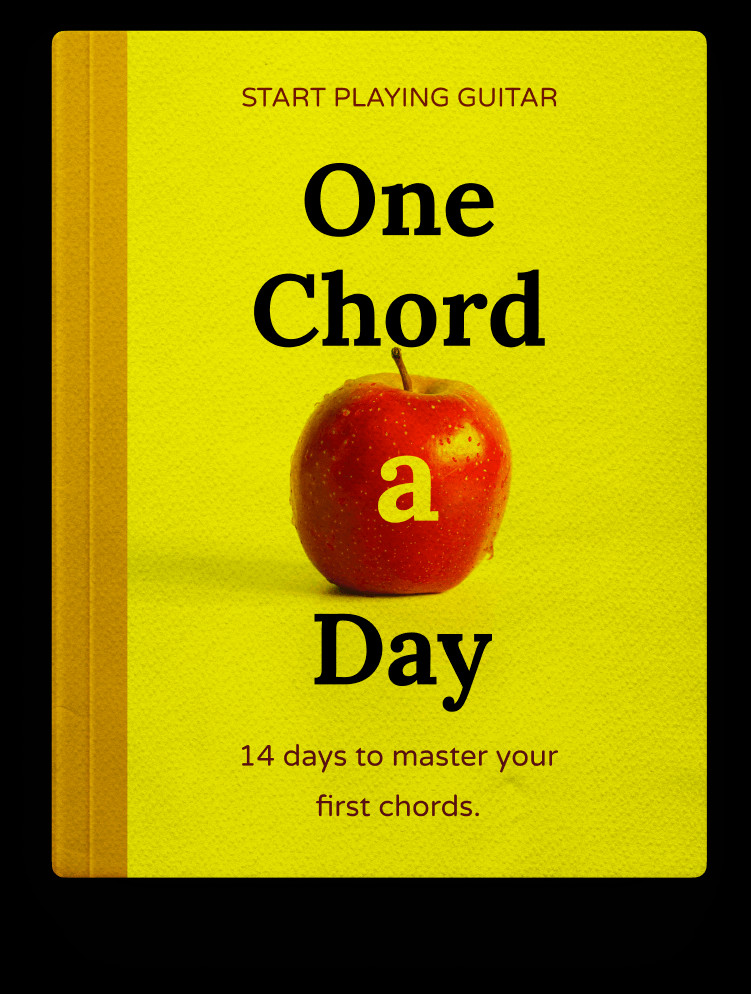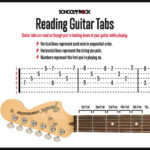Navigating the world oF Guitar Chords can be exciting, but let’s face it, some chords feel like roadblocks, especially for beginners. The F major chord often stands out as one of these challenges. If you’ve ever felt discouraged by the F chord, or even considered putting your guitar down because of it, you’re definitely not alone.
This guide is designed to demystify the F chord. We’ll break down the standard, full barre version that might have tripped you up, and introduce you to a beginner-friendly alternative that’s just as effective. With practical tips and clear instructions, you’ll be playing the F chord confidently in no time.
Unlock Your Chord Vocabulary: Learn the 6 essential guitar chords in 7 days with our free daily lessons.
Why is the F Chord So Darn Hard?
The F major chord’s reputation for being difficult comes from its barre chord nature. A barre chord requires you to use one finger to press down multiple strings at once. Look at the standard F chord shape:
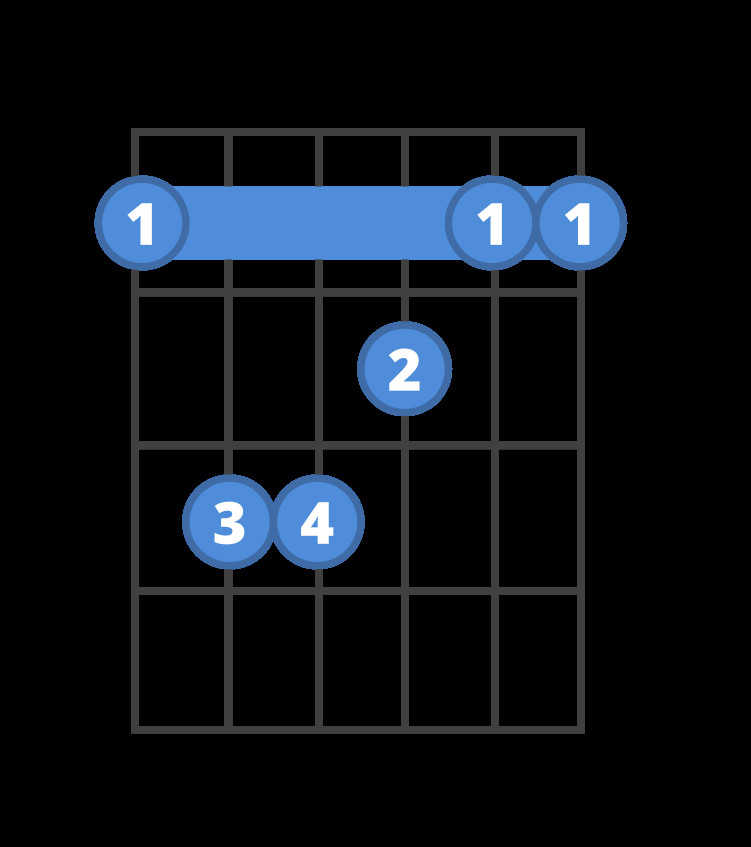 Chord diagram for the full barre F guitar chord.
Chord diagram for the full barre F guitar chord.
Notice how the index finger stretches across the fretboard, needing to press down multiple strings simultaneously. This requires finger strength and coordination that develops over time. It’s a common hurdle, but remember, every guitarist has conquered it!
Don’t get discouraged! We’ll first explore techniques to make the full barre F chord more manageable. If you’re just starting, feel free to jump to our easier F chord version below. It’s a fantastic starting point.
Master Guitar Fundamentals: One Chord a Day Course – Build essential skills in just 14 days.
Conquering the Full Barre F Chord
Let’s tackle the full barre F chord step-by-step. Here’s the chord diagram again for reference:
 Chord diagram for the full barre F guitar chord.
Chord diagram for the full barre F guitar chord.
The diagram shows your index finger barring across the 1st fret, covering the 1st, 2nd, and 6th strings. Let’s examine key techniques to make this shape work for you, drawing insights from experienced players:
Technique Tips for a Clear F Chord
Observe these pointers to optimize your full barre F chord technique:
Targeted Pressure
Notice in the diagram that while your index finger spans across all six strings, it primarily needs to apply pressure to the 1st, 2nd, and 6th strings. These are the two thinnest and the thickest strings. Avoid wasting energy trying to forcefully press down the middle strings. Focus your barre pressure strategically.
Finger Curvature is Key
Especially with your middle and ring fingers, it’s easy for them to accidentally mute adjacent strings. The solution? Curve your fingers! Aim to press down on the strings with the very tips of your fingers, not the fleshy pads where your fingerprints are. This curvature provides the necessary clearance for neighboring strings to ring out clearly.
The “Hold an Egg” Hand Position
Observe the open, relaxed position of the hand in instructional images. Imagine you’re holding an egg in the palm of your hand. This visualization encourages your thumb to rest on the back of the guitar neck, creating a space in your palm. This hand posture provides optimal leverage, making it easier to clamp down on the strings and achieve a clean sound.
Fret Proximity Matters
Pay close attention to how close your fingers, especially your index finger, are to the fret just before the one you’re fretting. Positioning your fingers closer to the fret makes it significantly easier to press the strings down cleanly. If you’re getting buzzing sounds, try adjusting your fingers slightly closer to the fret.
The Easier F Chord: A Beginner-Friendly Alternative
If the full barre F chord feels too challenging right now, don’t worry! There’s an excellent, easier version of the F chord that sounds fantastic and is perfect for beginners. You can absolutely use this version indefinitely – many players do!
Here’s what the easier F chord looks like:
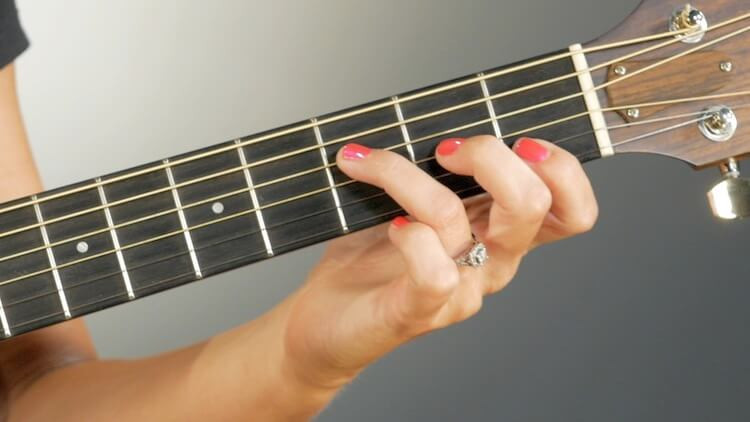 Image of the easier F guitar chord, small barre version.
Image of the easier F guitar chord, small barre version.
Notice the difference? Instead of barring all six strings, your index finger only covers the two thinnest strings.
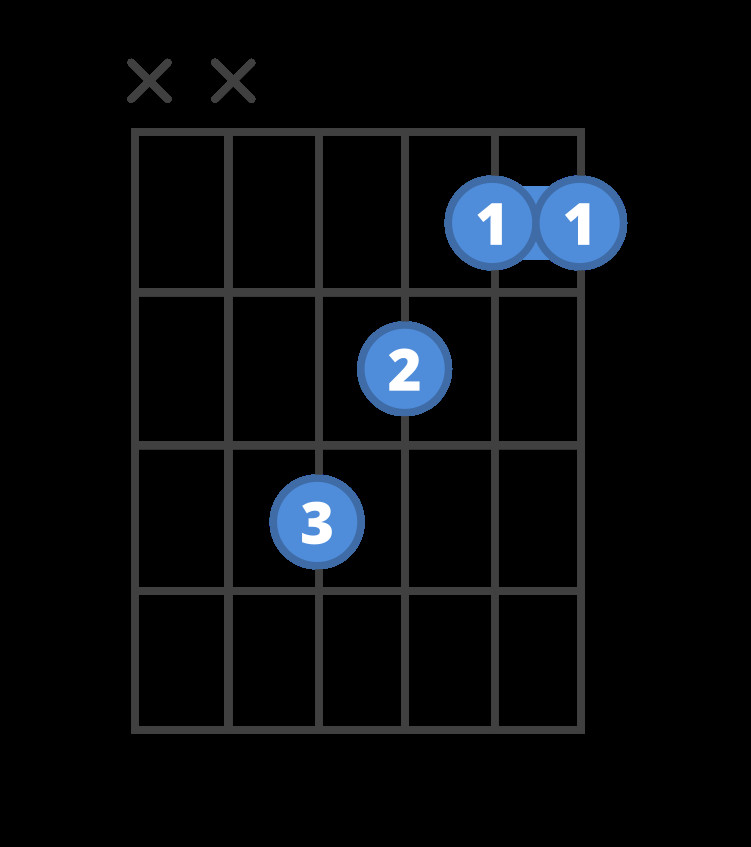 Chord diagram for the easier F guitar chord, small barre version.
Chord diagram for the easier F guitar chord, small barre version.
Confused by chord diagrams? Learn how to read chord diagrams here.
Step-by-Step Guide to the Easier F Chord
Let’s break down how to form this simplified F chord:
-
Index Finger Placement: Place your index finger across the two thinnest strings (1st and 2nd strings) just behind the first fret.
-
Middle Finger Placement: Move your middle finger to the next string towards the ceiling (3rd string), and one fret towards the guitar body (2nd fret).
-
Ring Finger Placement: Finally, place your ring finger one string further up (4th string), and one more fret towards the body (3rd fret).
 Image of the easier F guitar chord, small barre version.
Image of the easier F guitar chord, small barre version.
When strumming this easier F chord, focus on playing only the thinnest four strings. Observe in the image how the pick rests on the 4th string before strumming – this is a great technique to ensure you’re strumming accurately and developing good habits from the start.
Key Point: This easier F chord works because you avoid playing the thicker two bass strings. Strumming only the top four strings produces a complete and pleasant F major sound in most musical contexts.
Tips for Mastering the Easier F Chord
Even though it’s easier, these tips will help you play this F chord version cleanly:
Maintain Finger Arching
Just like with the full barre, arching your middle and ring fingers is crucial. Remember, you want only the tips of these fingers to press down the strings, avoiding contact with adjacent strings. “Leave no fingerprints!” is a fun way to remember this.
Adjust for Fret Proximity
If you hear buzzing, it likely means you’re not pressing close enough to the fret. Try moving all your fingers slightly closer to the next fret. This reduces the pressure needed to fret the strings cleanly and eliminate buzz.
String Focus: Strum the Right Ones!
Don’t forget, for this easier F chord, you only strum the thinnest four strings. Accurate strumming is key to making this chord version sound its best.
Continue Your Chord Journey
Barre chords might seem intimidating now, but they are fundamental to expanding your guitar skills.
Explore our comprehensive video series by experienced instructor Anna Freitas, designed to demystify barre chords. You’ll learn essential barre chord shapes, techniques for smooth transitions, and tips to eliminate fret buzz – empowering you to confidently play barre chords across the fretboard.
[
Barre Chord Mastery Lesson »
Unlock barre chords with step-by-step video instruction.
Practice Smarter, Not Harder: F Chord Exercises
To accelerate your F chord learning, utilize targeted practice drills and games.
These direct links open directly in the ChordBank App on your iPhone or iPad, offering interactive and engaging practice.
Smart Flashcards for Chord Practice
 iPhone displaying ChordBank Smart Flashcards.
iPhone displaying ChordBank Smart Flashcards.
Our Smart Flashcards provide an innovative way to practice. They listen to you play and automatically advance as they recognize the chords you strum.
Practice Set 1: F, C, and Am (Easier F Version)
To begin practicing the easier F major chord, try transitioning between it and the Am (A minor) and C (C major) chords.
F
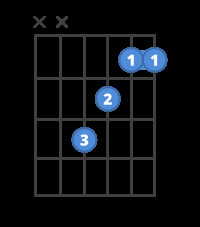 Chord diagram for the easier F guitar chord for flashcards.
Chord diagram for the easier F guitar chord for flashcards.
C
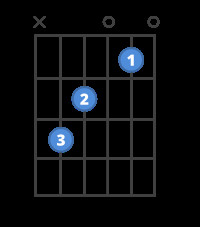 Chord diagram for the C guitar chord for flashcards.
Chord diagram for the C guitar chord for flashcards.
Am
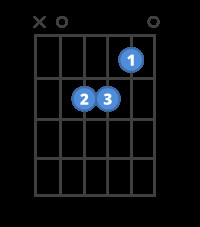 Chord diagram for the Am guitar chord for flashcards.
Chord diagram for the Am guitar chord for flashcards.
Keep your index finger anchored on the 2nd string at the first fret (for the F chord) and focus on smoothly moving your middle and ring fingers between chord shapes. This exercise helps solidify the easier F chord shape and builds muscle memory for chord changes.
[
Practice F, C, and Am Chords »
Use Smart Flashcards to drill these essential chords.
Practice Set 2: C, F, and G (Common Chord Progression)
C, F, and G major are among the most frequently used chords in popular music. Mastering transitions between them is essential.
C
 Chord diagram for the C guitar chord for flashcards.
Chord diagram for the C guitar chord for flashcards.
F
 Chord diagram for the easier F guitar chord for flashcards.
Chord diagram for the easier F guitar chord for flashcards.
G
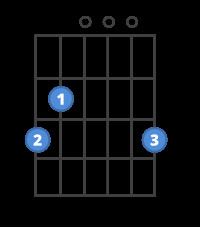 Chord diagram for the G guitar chord for flashcards.
Chord diagram for the G guitar chord for flashcards.
Adding the G chord introduces a new hand shape and requires you to reposition your entire hand. This practice set enhances your ability to quickly find the F chord again after playing other chords, a crucial skill for chord transitions. Take your time, practice consistently, and remember short, daily practice is more effective than infrequent long sessions.
[
Practice C, F, and G Chords »
Master this fundamental chord progression with Smart Flashcards.
Practice Set 3: F, Dm, Am (Minor Key Exploration)
The Dm (D minor) and Am chords create a complementary minor key feel alongside the F major chord.
F
 Chord diagram for the easier F guitar chord for flashcards.
Chord diagram for the easier F guitar chord for flashcards.
Dm
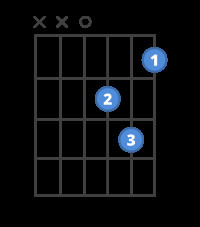 Chord diagram for the Dm guitar chord for flashcards.
Chord diagram for the Dm guitar chord for flashcards.
Am
 Chord diagram for the Am guitar chord for flashcards.
Chord diagram for the Am guitar chord for flashcards.
This flashcard set helps you develop your ear for how minor chords interact with major chords like F, further refining your chord changing skills and musicality. If it feels challenging, that’s a sign you’re pushing your boundaries and growing! Consistent effort is key.
[
Practice F, Dm, and Am Chords »
Explore minor key chord relationships using Smart Flashcards.
Make Practice Fun with Guitar Games
Turn chord practice into play with interactive guitar games within the ChordBank app!
 iPhone displaying ChordBank Smart Flashcards.
iPhone displaying ChordBank Smart Flashcards.
 iPhone displaying ChordBank Smart Flashcards.
iPhone displaying ChordBank Smart Flashcards.
Games like ChordPOP! and Blast-o-chords use your guitar’s sound as the game controller. ChordBank listens through your iPhone’s microphone, letting you fire darts or destroy falling rocks by playing the correct chords. This makes practice engaging and enjoyable.
[
ChordPOP!: F, Am, C, and Dm Game »
Pop balloons and fire darts by playing chords!
[
EmojiHunt: F, D, and C Game »
Fill in the blanks and hunt emojis with chords!
About the Author: Anna Freitas is a Berklee College of Music graduate, a performing guitarist and vocalist in New England, and a dedicated guitar teacher offering lessons online and in person.


